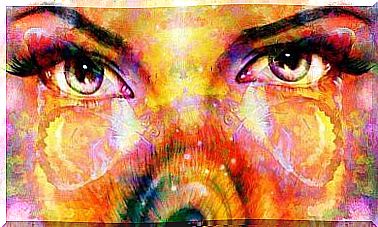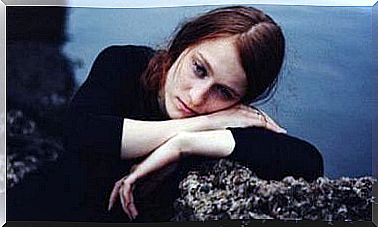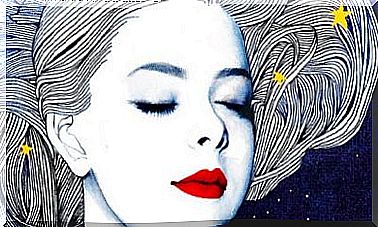Faith Ringgold, A Woman Who Embraced Her Destiny
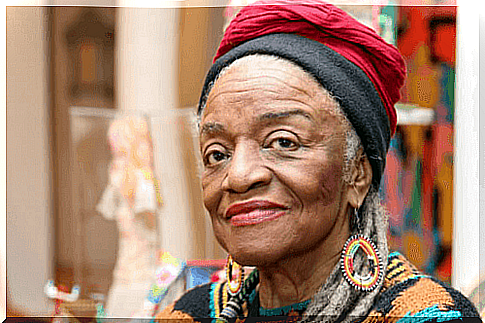
Faith Ringgold is an American artist. She is best known for the way she showcased her own unique art forms. Among all her creations, her quilts with stories stand out in particular.
Ringgold’s art and activism go hand in hand. Her art was a direct attack on prejudice. It served as a political statement, often exploiting the shocking value of racist insults.
Her work sheds light on the ethnic tension and political and racial unrest of the 1960s. It provides a fundamental insight into how white culture viewed African Americans.
Quilt making has its roots in the southern slave culture during the Civil War. In this way the artist took over the traditional work of quilt making. She reinterpreted the role to tell the stories of her life and those of many other African Americans.
The Childhood and Youth of Faith Ringgold
Faith Ringgold was born Faith Willie Jones on October 8, 1930, in New York. Her father, Louis Jones, was a truck driver. Her mother, Willi Posey Jones, worked as a fashion designer. Faith’s parents managed to earn enough to provide for the basic needs of their three children.
However, due to health problems, Faith Ringgold was unable to attend primary school regularly. She suffered from asthma. As a result, she spent most of her childhood in hospitals or at home. During that period of her life she developed a love for drawing. She then studied arts at the City College of New York.
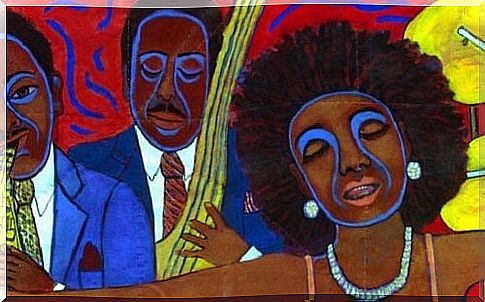
In 1950 she married Robert Earl Wallace, a jazz pianist. However, the marriage did not last long. They divorced in 1956. From this marriage she had two daughters, Barbara and Michele. On May 19, 1962, she married Burdette Ringgold.
After graduating, Faith worked as an art teacher at City College in New York. She also worked at Wagner College and the Bank Street College of Education in the 1960s and 1970s.
Her first work of art
In the early 1970s she left traditional painting behind. Ringgold then went on to create paintings in acrylic on canvas with sumptuous edges of cloth, just like those of the Tibetan thangkas.
In addition, she worked with her mother. They designed masks made of cloth hoods, pearls and raffia. These had their origin in the African tribal tradition. They were her first works of art.
Also with the help of her mother, Faith became involved in the production of life-size portraits of famous people. Examples include Adam Clayton Powell, Wilt Chamberlain, basketball players and other Harlem personalities. For that reason, her work became known as The Harlem Series.
At the same time, Faith promoted African art in college. In her classes she taught African jewelry design, clothing and pearls.
Politics in Faith Ringgold’s artwork
Faith Ringgold was deeply drawn to political issues related to the exploitation of women. On the other hand, this political motivation was influenced by the rise of the Civil Rights Movement.
In her art she managed to depict the suffering of a community. It was a suffering she had experienced herself.
In this way, Ringgold was able to expose social injustice through the paintings she made in the 1960s. Her paintings American People and The Flag is Bleeding belong to this period .
Her artworks were especially inspired by the work of the writers James Baldwin and Amiri Baraka. Both authors wrote about discrimination and the struggle of black people in the United States.
The quilts tell a story
Faith also expanded her field of work in the Fine Arts. She helped to establish sewing, weaving and fabric design in the art world. She was the first artist to challenge these limitations and introduce art weaving into her classes.
The concept of these quilts developed from the art of weaving that the African slaves brought to America. These quilts went beyond their basic purpose of providing warmth. They became a way of preserving memories. Somehow these fabrics acted like signs with messages.
Faith ‘s unique approach promoted the feminine craft of using these narrative quilts. On those quilts you can see a series of images along with the descriptions that tell a story.
Famous Faith Ringgold quilts
Echoes of Harlem was the first of more than 30 quilts she made from 1980. Each of these quilts took on the structure of children’s stories. Each part of the quilt corresponds to a page.
One of her most famous quilts with stories is Tar Beach. The quilt shows the image of a family gathering on their roof on a warm summer night.
You can see adults visiting each other while the children play and sleep. We also see the daughter who dreams about how she can fly freely over all the obstacles that were set up against black people. This scene is represented in the background by the George Washington Bridge.
Some of Fait’s other best-known quilts are: Who’s Afraid of Aunt Jemima? and Street Story. Who’s Afraid of Aunt Jemima? describes the life of an African woman who became a successful businesswoman.
Although Faith Ringgold lived in New York, her work was far removed from contemporary American art. The main reason was that black culture and racial discrimination were her only subjects. So it’s no surprise that she aroused no interest in more conservative and more elite circles.
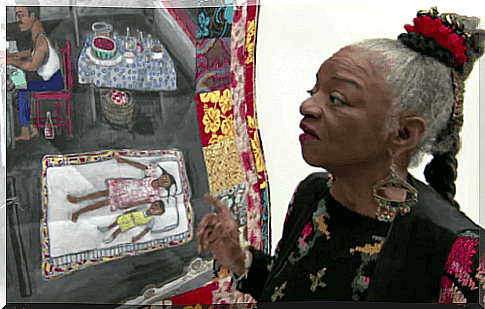
Social engagement and recognition
Faith is also known for her social activism. She fought for the rights of African artists at the Whitney Museum of American Art in New York with all her heart.
Her struggles were clearly demonstrated in the activities of the Women’s Art Committee, founded by the artist Poppy Johnson and the art critic Lucy Lippard. As a social activist, she has used the art to establish and develop organizations that support African-American artists such as Where We At.
His foundation, Anyone Can Fly, is dedicated to expanding the art catalog and aims to add artists from the African genre. In addition, the foundation is dedicated to introducing African American art teachers to children and adults.
Her most recent works, however, approach prejudice in a different way. She no longer uses confrontational imagery to attack prejudice. Instead, she chooses to overthrow prejudice by presenting positive images to young African Americans.
Faith Ringgold became the first black woman to manage to exhibit individually at The Spectrum Gallery in New York in 1967 and 1970.
Her achievements as an artist, teacher and activist have earned her numerous accolades. She has nearly 75 awards to her name. This also includes an honorary doctorate in Fine Arts.


